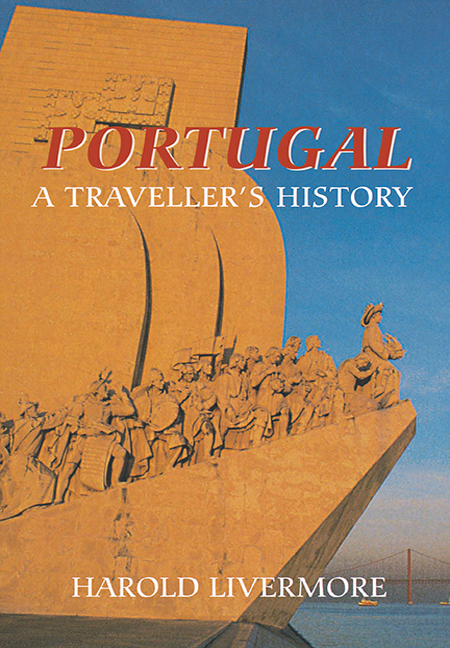Book contents
- Frontmatter
- Contents
- List of Illustrations
- Foreword
- 1 Introduction
- 2 Portugal in History
- 3 Before Portugal
- 4 Islamic Portugal
- 5 Architecture
- 6 Painting
- 7 Music
- 8 Birds
- 9 Fishing
- 10 Portuguese Wines
- 11 Lisbon
- 12 North from Lisbon
- 13 Oporto
- 14 North of Oporto
- 15 Interior Portugal
- 16 Alentejo
- 17 Algarve
- Afterword
- Index
- Frontmatter
- Contents
- List of Illustrations
- Foreword
- 1 Introduction
- 2 Portugal in History
- 3 Before Portugal
- 4 Islamic Portugal
- 5 Architecture
- 6 Painting
- 7 Music
- 8 Birds
- 9 Fishing
- 10 Portuguese Wines
- 11 Lisbon
- 12 North from Lisbon
- 13 Oporto
- 14 North of Oporto
- 15 Interior Portugal
- 16 Alentejo
- 17 Algarve
- Afterword
- Index
Summary
Algarve is Portugal's ‘other kingdom’ which is in many ways different from the rest of the country. Its name recalls that it was once the Far West, as seen from Egypt or Syria. In late Muslim times, its capital was Silves, but it was only a kingdom dependent on the Abbadid rulers of Seville. In 1471, Afonso V ‘the African’ assumed the title of ‘King of Portugal and of the two Algarves, on this side and on that’, thus stressing its ancient connection with Morocco, the Magrib. His son, the great John II, came to take the waters of Monchique, where he died in 1495. His chronicler noted that he died ‘at a small place outside of Portugal’. Under the Philips, its governor was referred to as a viceroy, but the designation has now no political implication. Since the tourist boom which began in about 1960, Faro has become the second busiest airport in Portugal, and it is possible to visit the Algarve without seeing the rest of the country, regrettable though this may be. It is marked off from the neighbouring Alentejo by a line of hills, which rise to nearly 3,000 feet in the Serra de Monchique and only half as high in the Malhão further east. They form a sort of amphitheatre, containing the undulating coastal plain which stretches for a hundred miles behind a succession of sandy beaches that catch the sun. It is in sharp contrast with the long levels of the adjoining Alentejo, which is bare grazing country with a relatively small population. The Algarve is only a fifth of the size of the Alentejo, but carries a higher population than either part of its neighbour.
The territory is too narrow to have any great river or estuary to attract a large population. As in the north, the coast is more populous than the interior, and has a string of small ports administered from Faro, which before the tourist boom had a population of only 13,000 and was chiefly engaged in the export of fish or fruit from its fertile hinterland. The Algarve is an orchard of almonds, which blossom in January, oranges, lemons and figs, as well as apples, pears, cherries and other fruit, and a market-garden for tomatoes, onions, cauliflowers, melons, aubergines, pimentos and so forth.
- Type
- Chapter
- Information
- Portugal: A Traveller's History , pp. 176 - 183Publisher: Boydell & BrewerPrint publication year: 2004



